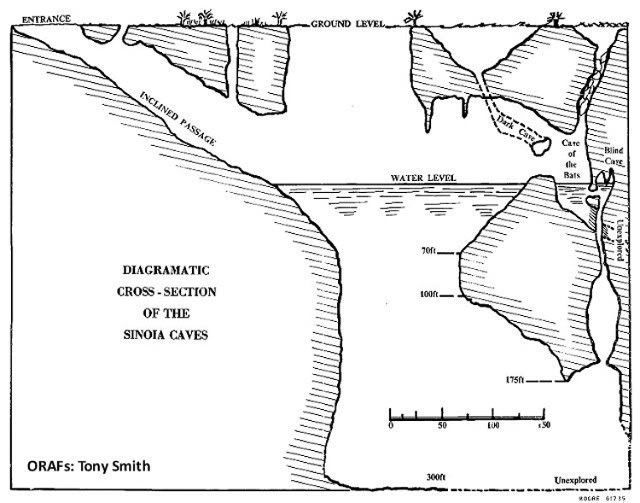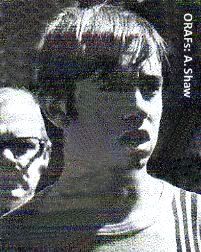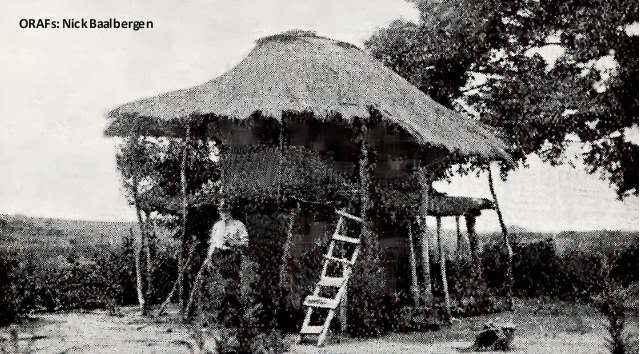The Sinoia Caves
The Lomagundi Regional Development & Publicity Association welcomes you to the Caves, and hopes that the following facts about them will help to make your visit more interesting.
When Selous, the great elephant hunter, first visited the Sinoia Caves in 1887, he imagined that this great hole in the ground was an ancient mine working.
His mistake can easily be understood by anyone who has seen the enormous cavity left by Ancient copper miners a few miles away at Alaska. In fact, of course, the famous Sleeping Pool is a limestone cavern, the roof of which has collapsed.
Selous found the Caves in the possession of the Mashona chief Chinoya, who had built a stockade around the entrance, and who used to retreat inside with his followers to escape from the raiding Matabele. Until a few years ago the remains of Chinoya's grain bins could be seen in some of the underground passages. The African name for the Caves is Chirorodziva, meaning Pool of the Fallen. It seems that in the 1830's while the Angoni tribe was moving Northwards, they surprised the people living nearby and flung many of them down into the pool. Visitors will note that the more dangerous places have now been fenced!
There are two ways of reaching the Sleeping Pool, 150 feet below the level of the ground. Through the main entrance and its inclined passage, where the view of the water has been compared by so many to the famous Blue Grotto of Capri, and through the Dark Cave, which leads down steps and along a narrow passage to a point just above the water at the far side of the Sleeping Pool. Middle-aged visitors would be well advised to leave this latter bit of exploring to the younger members of the party.
Recent exploration of the Caves by the Rhodesian Sub-Aqua and Spelaeologist Research Group has shown that the depth of water in the Sleeping Pool varies between 265 and 300 feet. As may be seen in the plan below several under water passages have been found leading from the Sleeping Pool, but all those so far explored lead back into the Pool again. Near the end of the Dark Cave is a small annexe to the Sleeping Pool known as the Cave of the Bats. This Cave has three outlets; one leads to a small cavern accessible only to a diver, known as the Blind Cave: a second connects with the Sleeping Pool 175 feet below the surface; the third has not yet been explored.
Samples of silt have been taken from the floor of the Pool. These have yielded several rare types of microscopic creatures, one of which is a new species.
It seems probable that further caverns remain to be discovered. Indeed, the Research Group suspects that the water in the Caves is connected with an even bigger body of water, in view of the fact the temperature in the Sleeping Pool never varies from 72 degrees Fahrenheit. It is likely also that evidence of primitive man will be unearthed; from discoveries in a similar formation in the Transvaal we know that hundreds of thousands of years ago these old caves were the favourite homes of man's shadowy ancestors, the Southern Monkey men, who walked erect and used antelope bones as weapons.
To the North of the Caves several sites of old rubble-filled caves have been found to contain fossil animal bones, and it is hoped that quarrying operations in the neighbourhood will yield fossils of even greater interest.
End of Article
Extracted and recompiled by Eddy Norris from material supplied by Tony Smith (Rhodesian Air Force). Thanks Tony.
No financial gain is intended from reproducing these memories - it is simply to record them on the ORAFs Website and not lose our memories and heritage.
A photo of the "Sleeping Cave" can be viewed at the link below,
Comments can be sent to the undersigned at orafs11@gmail.com




